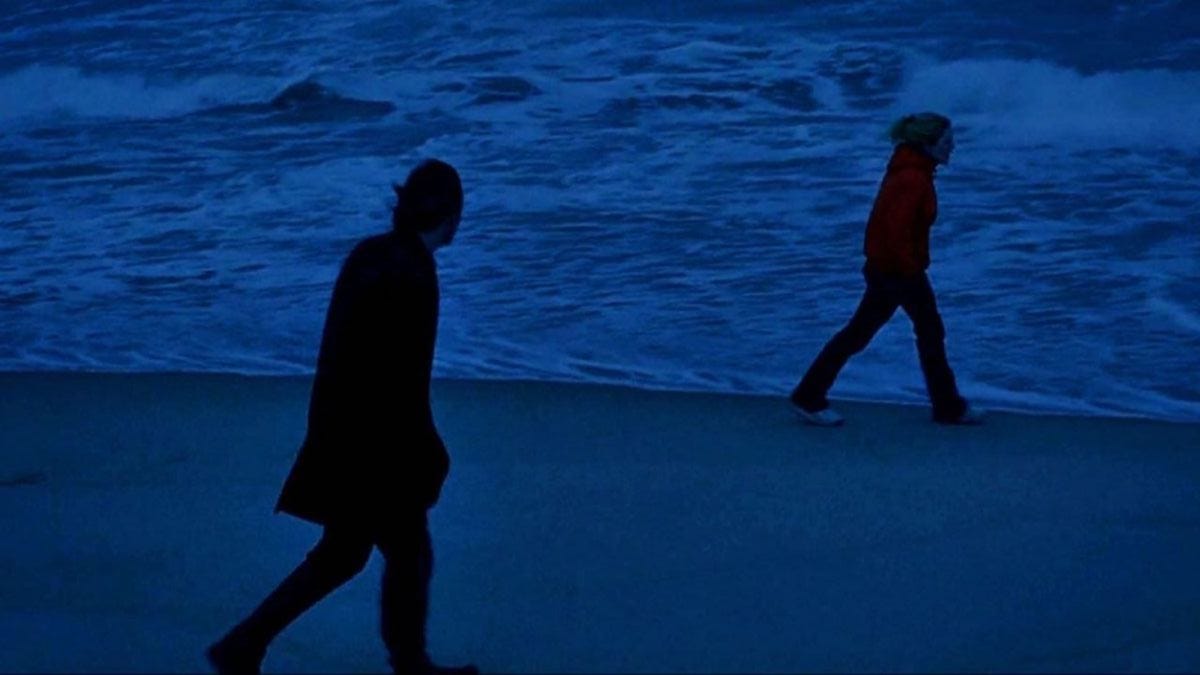‘Try Again. Fail Again. Fail Better.’
How an enigmatic mantra from the Irish novelist Samuel Beckett offers writers a roadmap for failing forward.
“Ever tried. Ever failed. No matter. Try again. Fail again. Fail better.”
– Samuel Beckett
The quote above from Samuel Beckett has become wildly popular over the years as a mantra in almost every field of professional life, from business to sports. And it’s clear why. It inspires people to persevere through failure and rejection, suggesting failure is a learning experience from which we can learn to ‘fail better’ next time.
The line appears in Beckett’s 1983 story, Worstword Ho! The art and culture site, Open Culture, describes how Beckett’s quote has gained so much popularity with tech start-ups in particular:
The sentiment seems to resonate naturally with the mentality demanded by the world of tech startups, where nearly every venture ends in failure, but failure which may well contain the seeds of future success.
However, there’s more to the story.
The paragraph after Becket’s famous quote reads: “Try again. Fail again. Better again. Or better worse. Fail worse again. Still worse again. Till sick for good. Throw up for good. Go for good. Where neither for good. Good and all.”
Throw up for good. Beckett was not well-known for being an optimist. He faced rejection and failure throughout his writing life. “Beckett himself probably regarded his own work as, to one degree or another, a failure,” writes Colin Marshall. “Those of us who revere [Beckett’s quote] would do well to remember that, and maybe even to draw some inspiration from it.”
While the meaning behind Beckett’s quote may be more complex and ambiguous than simply ‘keep trying,’ his lifetime of work is a testament to his determination to do just that. In 1969 he won the Nobel Prize in literature (he was rejected the year before for his ‘radically pessimistic’ style that wasn’t ‘in the spirit’ of the award).
Focus on the funk
How might Beckett’s famous and notoriously enigmatic line to ‘fail better’ inspire writers? One way could be to ask how other writers talk about ‘failing better.’ And a good place to find this kind of talk is in writers’ memoirs, a treasure trove of insights about failure, failing worse again, and failing better.
The most famous is probably Stephen King’s On Writing. But other memoirs by writers I whole-heartedly recommend for endless insights on ‘failing better’ are: On the Move by Oliver Sacks, Recollections of My Non-Existence by Rebecca Solnit, Earthly Paradise by Colette, The Art of Memoir by Mary Karr, The Fire Next Time by James Baldwin, and the list goes on.
I’m also an avid reader of biographies about writers. If you can find a copy of Paul Brooks now out of print book, House of Life: Rachel Carson at Work, get it.
A key theme that keeps popping up in many of these writing memoirs is a constant tension between creativity and failure.
The Irish writer and poet Samuel Beckett wrote often about walking the tight-rope between creativity and failure. He called this tension-filled space “the mess.”
Biographies of Samuel Beckett describe him as “shy,” “kind” and “modest.” A man whose “common decency” was “almost unnatural.” He was a good friend of fellow Irish writer James Joyce. Both men experienced intense rejection and criticism of their work throughout their lives. Maybe this is why Beckett refused so many interviews? To keep the over-analysis, and criticism, of his work at arm's length?
I’ve seen Beckett’s famous lines pop up occasionally across the web, mostly in self-help productivity articles or in motivational advice for entrepreneurs. But it wasn’t until I heard Dr. Cornel West quote Beckett’s lines off the cuff in an interview on CNN (around the 4:15 mark) that the richer meaning behind Beckett’s famous words started to sink in for me.
In an interview with the Social Science Research Council, entitled “Focus on the Funk,” West sums up the key insight from Beckett's notion of ‘failing better’ and how it has served him as a source of inspiration for his ‘concrete’ philosophy:
“you remember that wonderful letter by one of my great heroes, Samuel Beckett, where he says “Heidegger may talk about being and Sartre may talk about existence, but I talk about the mess. And my fundamental aim as an artist is to try to find a form that accommodates the mess?” Well, Beckett’s mess is my funk.
And by funk, what I mean is, wrestling with the wounds, the scars, the bruises, as well as the creative responses to wounds, scars, and bruises — some of them inflicted because of structures and institutions, some of them being tied to our existential condition, in terms of losses of loved ones, in terms of diseases, in terms of betrayals of friends, and so forth; all of these are wounds and scars and bruises.
And it’s at that very concrete level that my concept of philosophy operates.”
How Writers Can Navigate Inner and Outer ‘Funks’
So is there a practical takeaway for writers here? Here is my takeaway so far in thinking about all this:
When West talks about Beckett’s notion of ‘failing better’ in art and in life, he is speaking to the deeper, timeless struggle of being human: “Art connects us to what it means to be human and helps us find the truths behind superficial language,” West says. The artwork made by writers, musicians, and artists “allows us to distance ourselves from our sorrow and anguish, and from the pain that is coming at us all the time.”
But at a practical level, when it comes to putting in the daily work of making art, West points to how creating this ‘distance’ in our everyday lives is an essential skill for writers, and artists of all kinds, to keep on moving forward through ‘the funk.’ This seems especially true in 2020, at the close of this exhausting year.
One big challenge for me has been to find a balance between two sorts of ‘funks.’
- On the one hand, there is the ‘little f’ funk of daily writing. This is about sticking to an everyday practice of putting one word after another. ‘Little f’ funk is what the novelist Isabel Allende is talking about when she says ‘show up, show, show up, and maybe the muse will show up too.’
- On the other hand, there is the ‘Big F’ Funk. These are the major events in our lives marked by moments of success or failure. Like getting your writing published. Or rejected.
To my mind, there are at least two ways for writers to “Try again. Fail again. Fail better.” And they both involve finding a useful pathway forward through ‘the mess,’ or the ‘funk’ as Dr. Cornel West calls it.
- Productively navigating our inner funk.
- Productively navigating our outer funk.
They’re both interconnected, of course, as both inner and outer funks enable and constrain the other. But it’s a helpful starting point for me to distinguish between the two when it comes to being more fearlessly creative, and less fearful of rejection.
The goal is to find a healthy cognitive distance from the negative emotions that inevitably bubble up when our work gets rejected. And to find a breathing space where we can keep on ‘failing better.’
In other words, ‘focusing on the funk’ for writers means finding strategies to help us move our writing projects forward daily while continuing to share our work, all the while knowing there is a likely possibility what we make will be met with indifference, rejection, or worse, both.
So here are two pieces of advice I’ve found helpful, kind of like practical roadmaps to Beckett’s enigmatic mantra, “Try again. Fail again. Fail better.”
- Learn to value writing mastery (not writing success), and 2. Yell from your window, not the marketplace streets.
1) Dealing with the inner funk: Learning to value writing mastery, not writing success
Sarah Lewis, an associate professor of history of art and architecture and African and African-American studies at Harvard University, writes lucidly about navigating between creativity and failure. In her book, The Rise: Creativity, The Gift of Failure, and The Search for Mastery, one point she makes is that the key to failing better, like bouncing forward from rejection, depends on our ability to learn to value the ‘near win.’
If success and failure are both events — moments in time — they are also stories we tell about ourselves, stories about what happened to us in those moments. Instead, for Lewis, Beckett’s ‘failing better’ is about learning to value mastery over success: “The pursuit of mastery is an ever, onward almost,” she says. “Mastery is in the reaching, not the arriving.” I think Beckett would be on board with that idea.
When we don’t have a word for an inherently fleeting idea [like failure], we speak about it differently, if at all. There are all sorts of generative circumstances — flops, folds, wipeouts, and hiccups — yet the dynamism it inspires is internal, personal, and often invisible… It is a cliché to say simply that we learn the most from failure. It is also not exactly true. Transformation comes from how we choose to speak about it in the context of story, whether self-stated or aloud.
— Sarah Lewis, The Rise: Creativity, The Gift of Failure, and The Search for Master.
2) Dealing with the outer funk: Yell from your window, not the marketplace streets
On the other hand, there is an external struggle, dealing with critics and naysayers out there, in the marketplace. The writer and artist Amanda Palmer talks about this outer aspect of ‘the mess’ in a fascinating 2013 talk at the Grub Muse Conference called, “Connecting the dots.”
In her talk, she gives voice to the concerns writers face in sharing their work with the public: “For every bridge you build together with your community of readers, there’s a new set of trolls who sit underneath it.”
But no matter, Palmer says. “If your writing is good, if it resonates, if it connects the dots for anybody out there, the lovers will come, the haters will come, support will come, sometimes in the form of money, sometimes in the form of something less expected, and it balances.”
So don’t be afraid to put your work out there, but be strategic about how you go about it:
“So in this age of the independent social artist, which is kind of what this age is becoming, the question keeps echoing everywhere I go, which is: what about the Elliot Smiths, what about the P.J. Harveys, what about the shy and introverted artists who have no desire to leave the garret and enter the marketplace?
And that’s also a lot of writers. It is sort of right now the Wild West down there in the market place of the internet, and carrying your fragile newborn artwork wrapped in a blanket through the stalls can be agonizing. The marketplace is dangerous and it’s dirty and loud and filled with disease, and pickpockets, and naysers, and critics. It’s easier not to do it.
But there is another option, which is: to yell from your window, call to your friends below, your comrades in art and metaphor, and invite them to a private party in your garret. And this is basically the essence of crowdfunding. So finding your people, your listeners, your readers, and making art for and with them, and not for the masses, not for the marketplace, not for the critics, but for your hopefully ever-widening circle of friends.”








